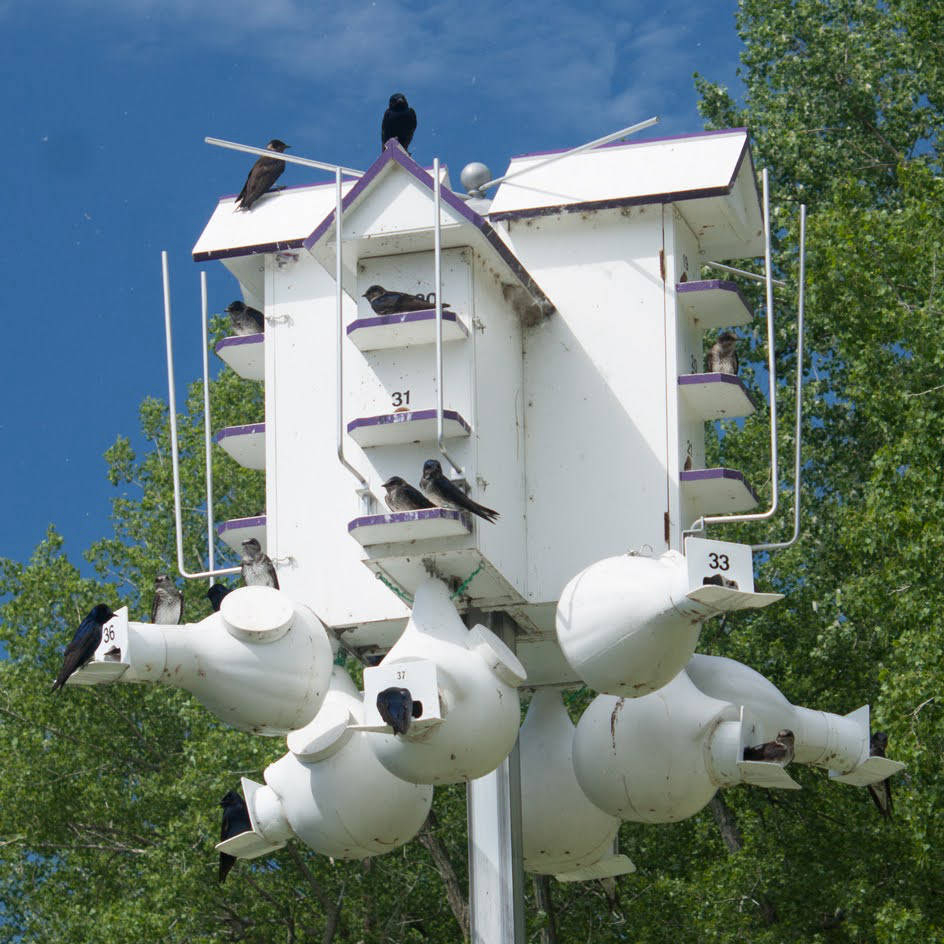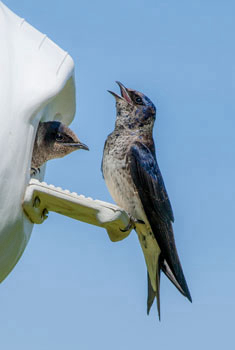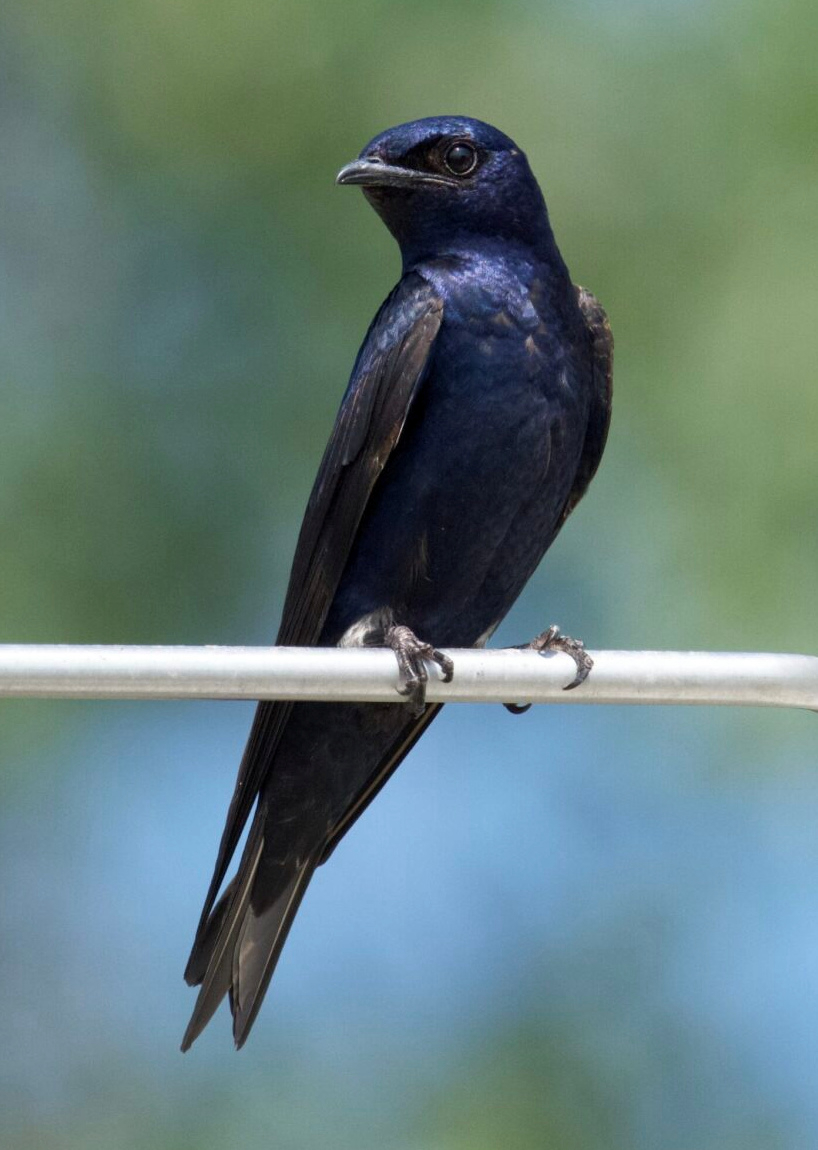
Apartment-style or hanging gourd nesting colony sites attract Purple Martins to yards and lake properties.

Purple Martins are colonial cavity nesters that use specialized nesting facilities provided by dedicated birders.

An all purple-blue coloration indicates an adult male Purple Martin. Males tend to arrive first in spring.
|
Purple Martins are specialized cavity nesting birds that nest in colonies, and they are the largest of North American swallows. But wait, are they really North American birds? After all, they spend most months of the year in the Amazon River Basin in South America. Nonetheless, almost every North American can connect Purple Martins to the largest of birdhouses, sometimes in the form of apartment house replicas for birds, often in the form of artificial gords hung in a colonial cluster provided especially as a Purple Martin nesting site.
“Purple Martin landlords” are a special group of birders who truly dedicate their spring and summer to these interesting colonial cavity nesting birds. Some landlords dedicate a part of their yard to Purple Marins by installing a colonial nesting site, or they have one at a seasonal lake cabin. Other birders provide a colonial nesting site at a city park in cooperation with the park department, or team up with staff at a nearby nature center or wildlife refuge to add, monitor, and maintain a Purple Martin nesting complex.
Purple Martins clearly need our interest and assistance, because there is an absolute lack of natural nesting sites for these specialized mega-swallows. And they reciprocate in a big way by feeding on small flying insects, including mosquitoes. Martins also add life to the area surrounding a colony nesting site with their classic calls and elegant flights a few months each year.
Starting and properly maintaining a Purple Martin nesting colony takes considerable time, effort, and an initial investment to do it right, but it’s a very rewarding endeavor for birders who often attest to these birds changing their lives. Like any effort to attract cavity nesting birds to your yard, it requires a level of patience because it may take more than one season to attract Purple Martins to use a new martin nesting abode. And being a Purple Martin landlord requires combating the efforts of non-native birds – primarily House Sparrows and European Starlings – from taking over nesting cavities at your colony nest site (the last thing you want to do is give up on Purple Martins and permit House Sparrows and starlings to take over any cavity nesting site).
If you are interested in learning more about Purple Martins and what is involved in being a true Purple Martin landlord, there is a very impressive group that can provide a wealth of up to date information and all the right products to begin a rewarding aspect of backyard birding – the Purple Martin Conservation Association (PMCA). The PMCA literally provides everything you need to know and more, and there is no reason to repeat portions of that information here, so we are going refer you directly to the Purple Martin Conservation Association, and let you take your interest as far as you wish to progress from there. You will find all your questions answered at their authoritative and interesting website that covers all things related to Purple Martins at PMCA Home - Purple Martin Conservation Association
In the meantime, keep alert for Purple Martins that have already begun to arrive at locations in some Southeast and Midwest states. At the same time, take some extra time to enjoy Purple Martin’s this spring and summer; visit a nesting colony and observe the martins’ activities from time to time as the season progresses. Watch for Purple Martins flying over your yard too, perhaps in the same air space as Chimney Swifts, Barn Swallows, or Cliff Swallows.
Share your backyard birding experiences and photographs with The Birding Wire at editorstbw2@gmail.com